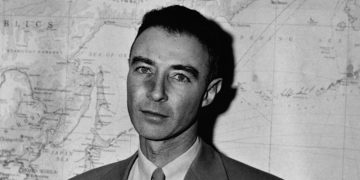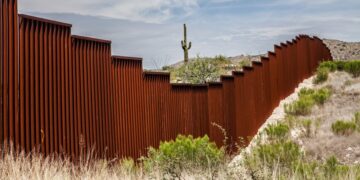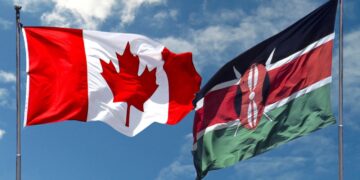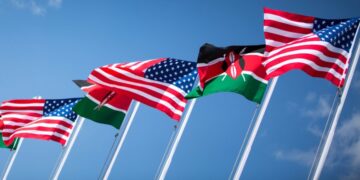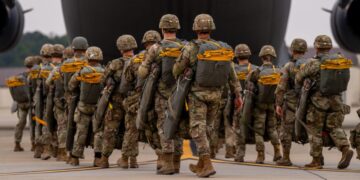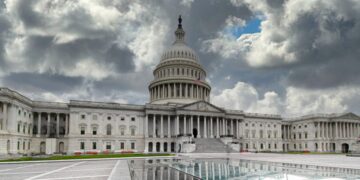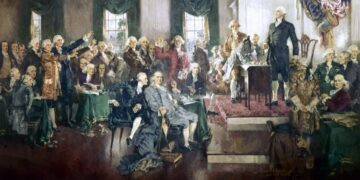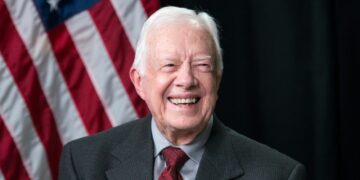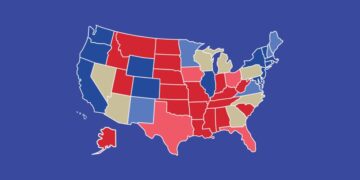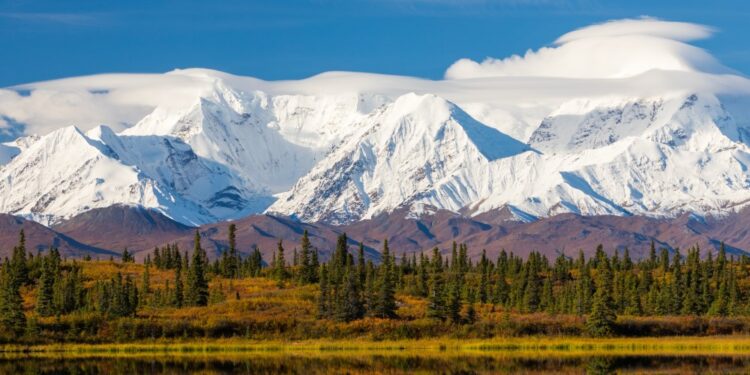In 1867, the Russian Empire sold Alaska to the United States for $7.2 million – about two cents per acre. At the time, many Americans ridiculed the deal, calling it “Seward’s Folly” or “Seward’s Icebox”. Today, Alaska is recognized as one of the most resource-rich and strategically important territories in the U.S., making the sale one of history’s most fascinating land transactions. But why did Russia part with such a vast and resource-laden territory? The answer lies in a complex interplay of economic pressures, geopolitical realities, imperial overreach, and diplomatic maneuvering.
Russia’s North American presence
To understand why Russia gave up Alaska, we must first look at how it became part of the empire in the first place.
The birth of Russian America
Russia’s presence in North America began in the mid-18th century. Driven by the fur trade – especially highly prized sea otter pelts – Russian explorers and traders pushed eastward across Siberia and into Alaska. In 1799, the Tsar chartered the Russian-American Company (RAC), granting it monopoly rights to exploit the territory’s resources. Russian settlements dotted the coast, and the Orthodox Church established missions. At its peak, Russian America stretched from the Aleutian Islands to Fort Ross in California.
Challenges of distance and administration
Despite its size – more than 1.7 million square kilometers – Russian America had only a few hundred Russian settlers. Supplying these remote outposts required perilous sea voyages, and communication with St. Petersburg could take months. By the mid-1800s, the colony’s main source of revenue – the fur trade – was in decline due to overhunting. With sea otter populations collapsing, the RAC’s profits plummeted, leaving the colony financially fragile.
Economic and strategic pressures on the Russian Empire
This was the era when Russia began to feel the strain of maintaining far-flung possessions with dwindling returns.
Post-Crimean War financial strain
Russia’s defeat in the Crimean War (1853-1856) against an alliance of Britain, France, and the Ottoman Empire exposed its military weaknesses and left the treasury deeply in debt. Maintaining a distant, unprofitable colony like Alaska became increasingly difficult to justify.
The cost of defense
Alaska’s remote location and sparse population made it nearly impossible to defend. Russia’s naval power in the Pacific was minimal, and any serious attack – especially from Britain, whose forces were stationed in nearby Canada – could result in Alaska’s loss without compensation.
British threat and geopolitical logic
Relations with Britain were strained. Russian strategists feared that in any future Anglo-Russian conflict, British forces could easily capture Alaska. Selling the territory to the United States, a friendly power at the time, would not only bring in much-needed funds but also keep the British at bay.
Diplomatic relations with the United States
Here, diplomacy played a critical role – Russia chose its buyer carefully.
A friendly power across the Pacific
Unlike Britain and France, the United States had relatively warm relations with Russia. During the American Civil War, Russia had sent its fleets to American ports in a show of support for the Union cause. This goodwill created a favorable climate for negotiations.
The idea of a strategic buffer
Selling Alaska to the U.S. meant creating a buffer between British Canada and Russian territories in Asia. It also aligned with the United States’ policy of westward expansion – Manifest Destiny – which made it a willing buyer.
Early discussions about selling Alaska
The seeds of the deal were planted years before the final sale took place.
The 1850s debate
The idea of selling Alaska was floated as early as the 1850s. Grand Duke Konstantin, the Tsar’s brother, argued that American expansion into the Pacific was inevitable and that Russia should sell Alaska while it could still get a fair price. However, Foreign Minister Alexander Gorchakov urged caution, fearing that a sale might appear as a sign of weakness.
Informal U.S. interest
Even before the Civil War, U.S. officials, including Senator William Gwin of California, had shown interest in Alaska. Russian envoy Eduard de Stoeckl gauged American willingness to buy, suggesting a price of at least $5 million.
The post-Civil War push for the deal
After the war, the political climate was ripe for expansion and negotiation.
William H. Seward’s expansionist vision
After the Civil War ended in 1865, U.S. Secretary of State William H. Seward was keen to expand America’s territory. He envisioned the U.S. as a Pacific power, and Alaska fit into that strategic picture.
Negotiations begin
In late 1866, Tsar Alexander II authorized Stoeckl to begin formal talks. Both sides recognized mutual benefits – Russia would offload a financial and strategic burden, while the U.S. would gain territory and influence in the Pacific.
The Alaska purchase agreement
This was the moment where decades of strategic thinking turned into a signed treaty.
The treaty
On the night of March 30, 1867, after hours of negotiation, Seward and Stoeckl signed a treaty selling Alaska to the U.S. for $7.2 million – about two cents per acre. In today’s money, that would be roughly $140 million, still a bargain for the land’s eventual value.
Ratification
The U.S. Senate ratified the treaty on April 9, 1867, and President Andrew Johnson signed it into law on May 28. The formal transfer took place in Sitka on October 18, 1867, a date still celebrated in Alaska as Alaska Day.
Public reaction: Skepticism and mockery
The sale didn’t immediately inspire applause – it triggered ridicule on both sides of the Pacific.
“Seward’s Folly”
Many Americans mocked the purchase, calling it “Seward’s Folly” or “Seward’s Icebox”. Critics saw Alaska as a frozen wasteland with no apparent value.
Russian sentiment
In Russia, reactions were mixed. Some lamented losing a foothold in North America, while others accepted it as a pragmatic move to strengthen the empire’s position elsewhere.
What the U.S. gained from Alaska
History would prove that the skeptics underestimated Alaska’s potential.
Natural resources
In the decades after the purchase, Alaska’s true wealth became clear:
- Gold: The Klondike and Nome gold rushes in the late 19th century brought thousands of prospectors.
- Oil and Gas: Alaska now provides a significant portion of U.S. domestic energy.
- Fisheries and timber: Rich marine and forest resources became major industries.
Strategic location
Alaska’s position proved critical during World War II and the Cold War, serving as a base for defense against potential Soviet threats and as a gateway to the Arctic.
Long-term impact on U.S. – Russian relations
While the sale temporarily strengthened U.S. – Russian ties, geopolitical realities shifted in the 20th century. During the Cold War, Alaska’s proximity to the Soviet Union became a frontline in the Arctic standoff. Nonetheless, the 1867 purchase remains a rare example of a peaceful, mutually beneficial land transfer between major powers.
A summary of the key reasons for the sale
For quick reference, these are the main drivers behind Russia’s decision.
| Reason | Explanation |
| Economic decline | Fur trade collapse made Alaska unprofitable. |
| Financial strain | Crimean War debts left Russia cash-strapped. |
| Defense challenges | Inability to protect Alaska from British attack. |
| Geopolitical strategy | Selling to U.S. created a buffer against Britain. |
| Diplomatic relations | Strengthened friendly ties with the U.S. |
| Domestic priorities | Russia focused on reforms at home, like ending serfdom. |
Conclusion
When viewed through the lens of 19th-century geopolitics, the Alaska purchase was less about ice and more about strategy. The sale of Alaska was a calculated decision by the Russian Empire – an act of imperial pragmatism shaped by economic hardship, strategic vulnerability, and diplomatic foresight. For Russia, it removed a costly liability and cemented ties with a friendly nation.
For the United States, it was an extraordinary bargain that yielded vast resources, strategic advantage, and a new frontier. What was once mocked as “Seward’s Folly” has proven to be one of the most profitable real estate deals in history – a reminder that in geopolitics, short-term perceptions often give way to long-term realities.














































